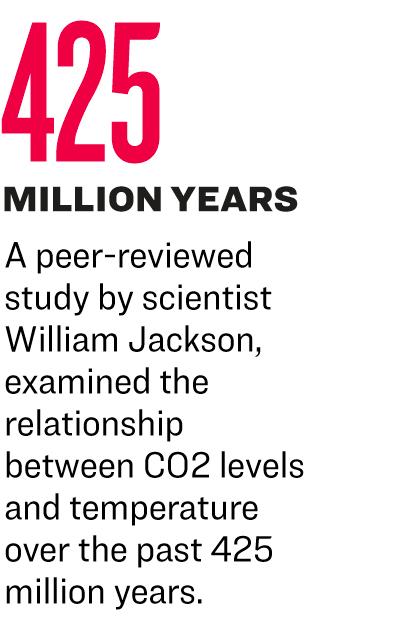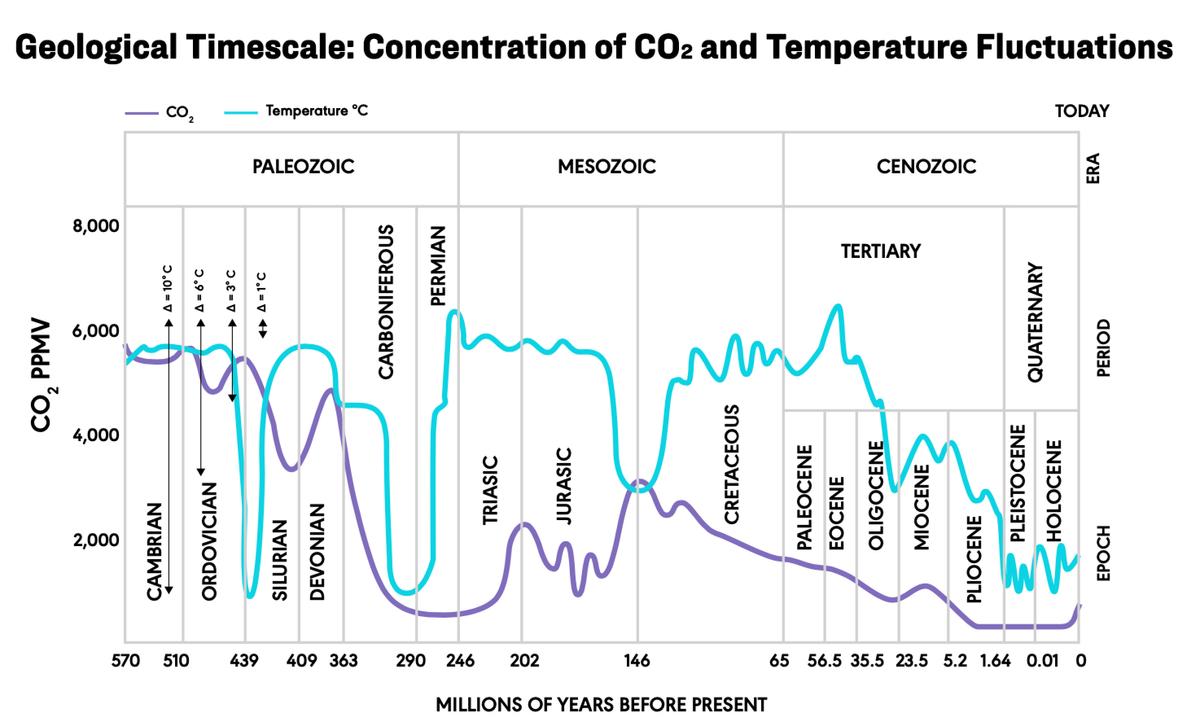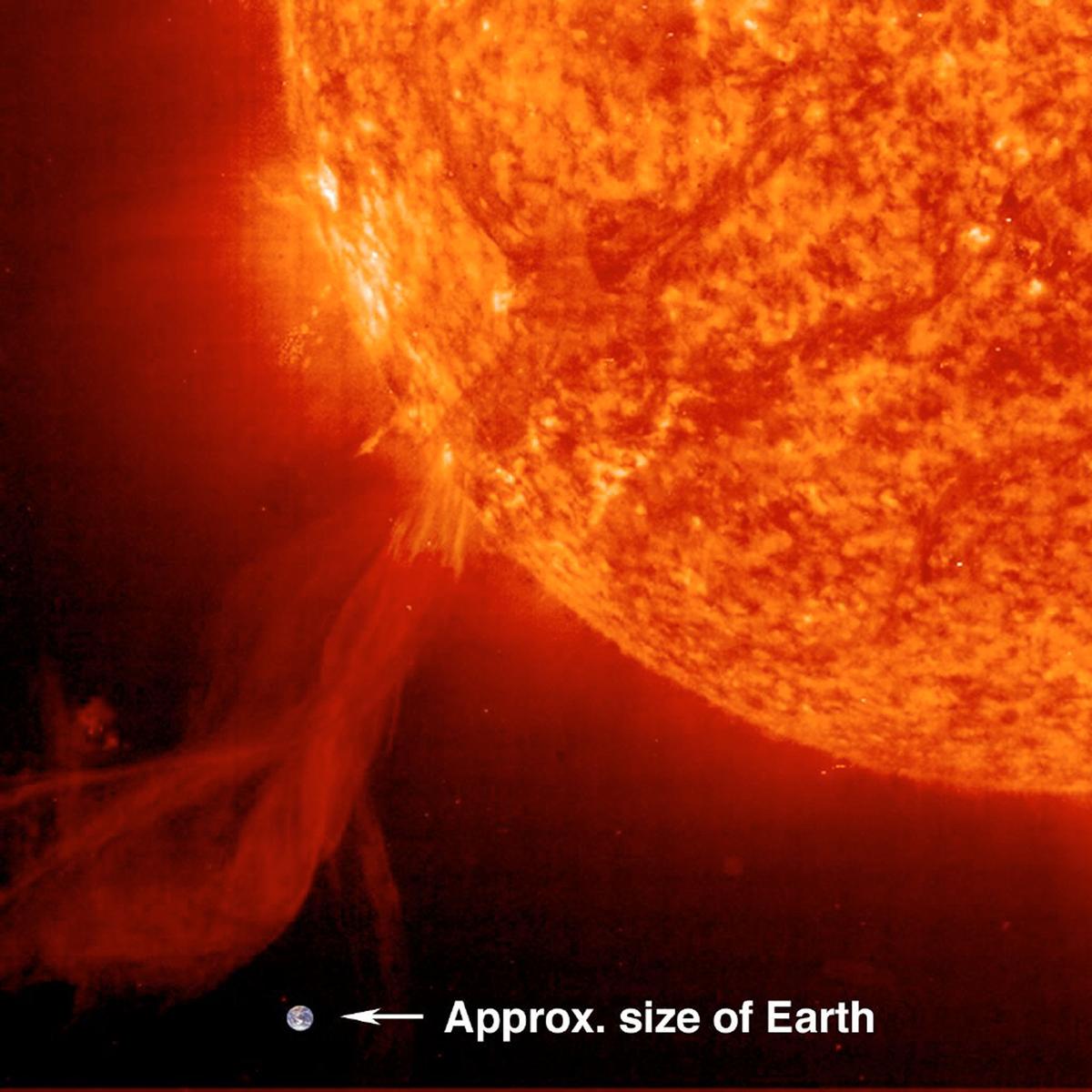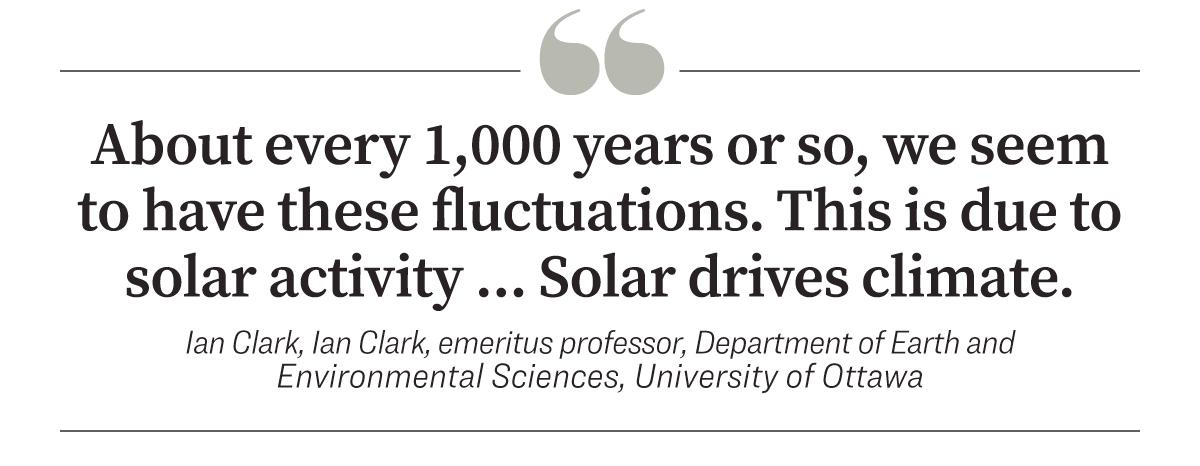UN claims that human-caused CO2 emissions are imperiling the planet are ‘totally garbage,’ says scientist. ‘CO2 doesn’t cause a change in temperature.’
By Katie Spence
|
February 19, 2024
Each year from 2023 to 2030, climate change sustainable development goals will cost every person in economies such as the United States $2,026, the U.N. Conference on Trade and Development estimates. In lower-income economies, the per-person annual cost ranges from $332 to $1,864.
In total, the global price tag comes to about $5.5 trillion per year.
Separately, a report from the left-aligned nonprofit Climate Policy Initiative found that in 2021 and 2022, the world’s taxpayers spent $1.3 trillion each year on climate-related projects.
It also found that the “annual climate finance needed” from 2031 to 2050 is more than $10 trillion each year.
“Anyone who willfully denies the impact of climate change is condemning the American people to a very dangerous future,” President Joe Biden said on Nov. 14, 2023, while announcing $6 billion in new investments through the Inflation Reduction Act (IRA).
“The impacts we’re seeing are only going to get worse, more frequent, more ferocious, and more costly.”
At its signing in August 2022, President Biden said the IRA “invests $369 billion to take the most aggressive action ever—ever, ever, ever—in confronting the climate crisis and strengthening our economic—our energy security.”
A report from Goldman Sachs put the dollar amount much higher, stating, “Critical funding for this next energy revolution is expected to come from the IRA, which will provide an estimated $1.2 trillion of incentives by 2032.”
But any decrease in carbon dioxide (CO2) emissions won’t have an effect for hundreds to thousands of years—even under the most restrictive circumstances, according to some experts.
“Surface temperatures would stay elevated for at least a thousand years, implying a long-term commitment to a warmer planet due to past and current emissions,” the report states. “The current CO2-induced warming of Earth is therefore essentially irreversible on human timescales.”
“If we stopped emitting greenhouse gases today, the rise in global temperatures would begin to flatten within a few years. Temperatures would then plateau but remain well-elevated for many, many centuries,” NASA states.
And, other scientists say, that’s because CO2 isn’t the culprit in the first place.
Temperature and CO2
One of Mr. Clark’s primary areas of research is paleoclimatology (the study of climate conditions using indirect records such as tree ring data, ice cores, and other proxy records), and in particular, Arctic paleohydrogeology, which is the study of the Earth’s water throughout history.“During the ice ages, we had great temperature variations, and this has to do with, not straight-up solar activity, but the amount of solar activity that is hitting the Earth at certain important latitudes, all caused by celestial events,” Mr. Clark said.
“The Earth, in our solar system, is moving around and being jostled. And we have different orbiting patterns that affect solar input, and that creates ice ages and interglacial periods—which we’re in now. And CO2 tracks that. So we'll see enormous temperature changes, going from ice ages to interglacials, and CO2 gets very low during ice ages and very high during interglacials.
“And that gives the appearance that CO2 is driving the climate, but it’s actually following. It lags by about 800 years.”
Mr. Clark said that during ice ages, and particularly the past 10,000 years, scientists have a fairly good idea of the temperature, thanks to proxy records. He said those records show that the Medieval Warm Period was likely much warmer than today, and agriculture and civilization flourished.
But the Little Ice Age followed that from the 1400s to 1800s. “And that’s when we had difficulty with agriculture,” Mr. Clark said.
“The Thames froze over. We have all sorts of recollections about how cold, and some would say miserable, it was back then. But then it started warming up again. So, about every 1,000 years or so, we seem to have these fluctuations. This is due to solar activity, and that’s where we see the importance of the sun, which is the ultimate source of energy beyond geothermal and nuclear energy. Solar drives climate.”

Mr. Jackson is a distinguished research and emeritus professor for the department of chemistry at UC–Davis who specializes in understanding the role that molecules such as CO2, nitrogen, and carbon monoxide play in planetary atmospheres.
His paper, published in 2017, found that “changes in atmospheric CO2 concentration did not cause temperature change in the ancient climate.”
 A geological timescale showing the concentration of CO2 and temperature fluctuations over time. (Courtesy of Dr. Patrick Moore)
A geological timescale showing the concentration of CO2 and temperature fluctuations over time. (Courtesy of Dr. Patrick Moore)They further found that when temperature and atmospheric CO2 reached a certain level, organic carbon burial drastically increased, eventually resulting in a significant decrease in atmospheric CO2 levels.
Inflow and Outflow
CO2 flows from the atmosphere into plants through photosynthesis and soil through decomposition, is absorbed by the oceans, and is then released through respiration, evaporation, and fossil fuel combustion. The entire process is called the carbon cycle.Moreover, Mr. Berry said that once CO2 in the atmosphere increases to a certain level, nature automatically increases the outflow.
“It’s almost like a bathtub, which may have a spout open so that water can flow out of it if it reaches a certain level,” he said. “A certain setting of the inflow will raise the level to a certain point. And as the [water] level goes up, the faster it'll flow out. There’s a balance level for any inflow setting—a balance level where it all stays the same. In other words, the outflow equals the inflow. And when the outflow reaches the inflow, it’s at its balance level, and it no longer accumulates.”
Mr. Berry said the premise that humans are solely responsible for increasing CO2 is problematic.
According to the U.N.’s Intergovernmental Panel on Climate Change (IPCC), since 1750, CO2 concentration has increased from 280 parts per million (ppm) to more than 420 ppm, and the IPCC claims that this increase is anthropogenic, or caused by humans.
“Multiple lines of evidence confirm that the post-industrial rise in these gases does not stem from natural mechanisms. ... Emissions of CO2 from fossil fuel use and from the effects of land use change on plant and soil carbon are the primary sources of increased atmospheric CO2.”
Mr. Berry called the IPCC’s statement “totally garbage.”
“I used the IPCC’s own carbon cycle data, which IPCC says is accurate to about 20 percent,” he said. “The model doesn’t give humans producing 140 ppm. It comes out closer to 30 ppm. Which essentially means the IPCC is wrong.”
Mr. Berry said there’s no scientific basis for the claim that a “certain amount of carbon dioxide in the air causes a certain amount of temperature increase.”
“They say we have to reduce (CO2) to 350 ppm to cool it down to where temperature was a while ago? There’s no physics to that,” he said.
Climate Dictated by Sun
“If we completely cut out emissions, CO2 would stop rising at its current rate,” Mr. Clark said. “But it would probably continue to rise to a certain point, and then it could come down. But that would be driven by temperature.”Mr. Clark said that in different parts of the world and at different times of the year, CO2 fluctuates “between 15 and 20 percent,” and that’s driven by the temperature of the seasons.
“If we start having cooler summers and colder winters, those fluctuations would start driving CO2 further down. But overall, climate is going to do whatever the sun dictates,” he said.
 Astronomers at the Solar & Heliospheric Observatory (SOHO) captured this image of a solar prominence erupting from the surface of the sun on Oct. 25, 2002. It is shown here with the Earth in scale to demonstrate the immense size of this solar phenomenon. (SOHO/ESA/NASA/Getty Images)
Astronomers at the Solar & Heliospheric Observatory (SOHO) captured this image of a solar prominence erupting from the surface of the sun on Oct. 25, 2002. It is shown here with the Earth in scale to demonstrate the immense size of this solar phenomenon. (SOHO/ESA/NASA/Getty Images)“We had the Roman Warm Period, then the Medieval Warm Period, and now we have the Modern Warm Period; one, two, three. And history and the records tell us they only last a couple hundred years, and we’re already a hundred-some-odd years into this one.”
In addition to not affecting temperature, Mr. Clark said the attempts to reduce CO2 are dangerous because of the anticipated effect on plants.
“C4 plants, like corn, evolved just 20–30 million years ago. And they evolved in response to the declining CO2 in the atmosphere. So, they’re a relative latecomer to our biosphere and reflect the danger of decreasing CO2,” he said.
A majority of plants, such as trees, wheat, and rice, are what’s known as C3 plants, which thrive at higher CO2 levels of 800 to 1500 ppm.
Mr. Clark said one of the benefits of increasing CO2 is improved global grain yields and the general greening of the planet.
Continue reading the article at the following weblink:
https://www.theepochtimes.com/article/fixation-on-co2-ignores-real-...
Electric Vehicles Are So Unpopular That Entire Mines Are Shutting Down
Will Kessler on February 19, 2024
A slowdown in the growth of electric vehicle (EV) demand has led to entire mines being shut down as the supply of rare earth minerals essential for EV components exceeds demand, according to The Wall Street Journal.
Mines around the world are ceasing operations or halting construction projects in response to the falling demand, such as a $1.3 billion plant in North Carolina operated by Albemarle. which announced that it was deferring spending on the project amid the market turmoil, according to the WSJ The total market share of EVs rose from 3.1% in January 2023 to 3.6% in December 2023, while the share of U.S. vehicle inventory grew from 2.8% to 5.7% in that same time frame as demand fails to keep up with supply.
Full article at the following weblink:
https://dailycallernewsfoundation.org/2024/02/19/electric-vehicles-...
Gov. Whitmer Calls on Michiganders to House Illegals As Migrant Invasion Crisis Worsens
https://www.infowars.com/posts/gov-whitmer-calls-on-michiganders-to...
WATCH: Michael Yon Breaks Bombshell Revelations About NGOs Orchestrating MASS INVASION of America
https://www.infowars.com/posts/watch-michael-yon-breaks-bombshell-r...
Did Obama Commit Massive Blatant Treason?
https://www.infowars.com/posts/did-obama-commit-massive-blatant-tre...
Trump Haters Really Don't Know What They Hate
https://rumble.com/v4ea56w-trump-haters-really-dont-know-what-they-...
Views: 227
Comment
-
Comment by Thinklike A. Mountain on February 20, 2024 at 5:57pm
-
Woman Wakes Up from 5-Year Coma After Mother Refused to Listen to Doctors Telling Her to Pull the Plug
https://www.westernjournal.com/woman-wakes-5-year-coma-mother-refus...
-
Comment by Thinklike A. Mountain on February 20, 2024 at 11:27am
-
Have the rent-seeking clowns lying about the need for EV's to reduce their death gas, CO2, taken into consideration the CO2 that will result from having to build more durable roads, bridges and parking structures?
Engineering Infrastructure to Support Societal Resiliency
To develop practical and prudent approaches to mitigate the inexorable increase in passenger vehicle weights, we review the structural effect of the added loads to quantify the risks imposed on parking garage owners, users, and stakeholders. Many existing parking structures need repair, and there is a high probability that they do not meet current or historic code-loading requirements. There are many cases of parking structure failures, and the growing demand for EVs will only increase the probability of failure.
https://www.structuremag.org/?p=26208
-
Comment by Thinklike A. Mountain on February 20, 2024 at 11:19am
-
Heavy, Environmentally Unfriendly EVs Are Destroying America’s Infrastructure
The answer is that EVs are causing a lot of damage to America’s crumbling infrastructure, which is currently in desperate need of repair if it is going to last and keep business and the economy running smoothly.It is something that many people overlook when considering the “green” factors associated with EVs, but their sheer heaviness means that a whole lot more wear and tear is occurring with each passing car on the highway.
https://discern.tv/heavy-environmentally-unfriendly-evs-are-destroy...
© 2025 Created by Webmaster.
Powered by
![]()



You need to be a member of Citizens' Task Force on Wind Power - Maine to add comments!
Join Citizens' Task Force on Wind Power - Maine